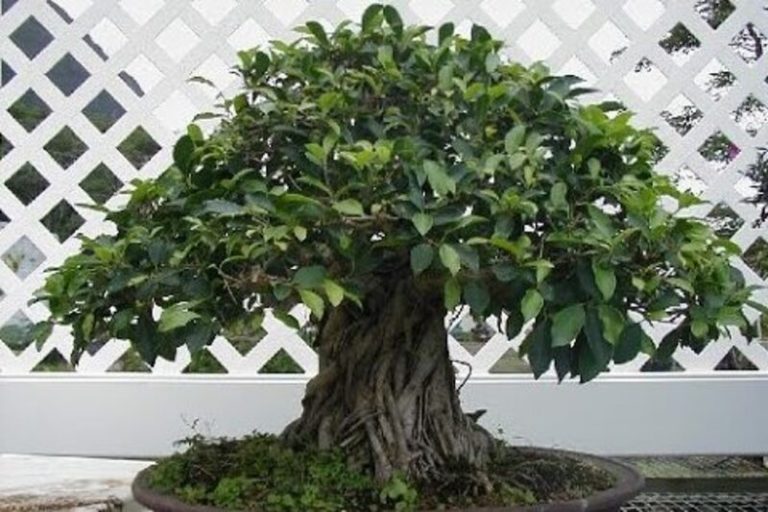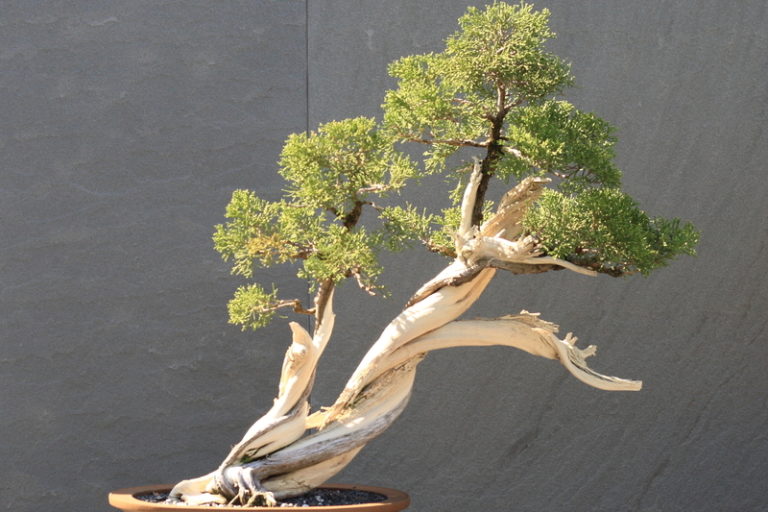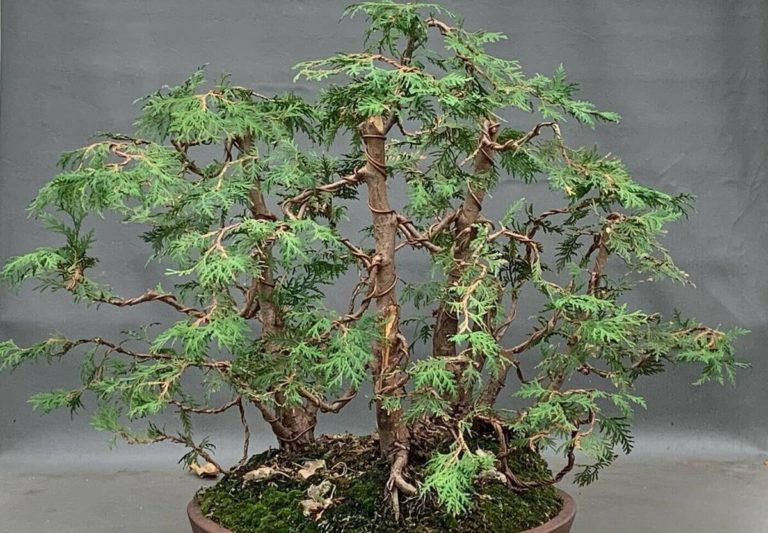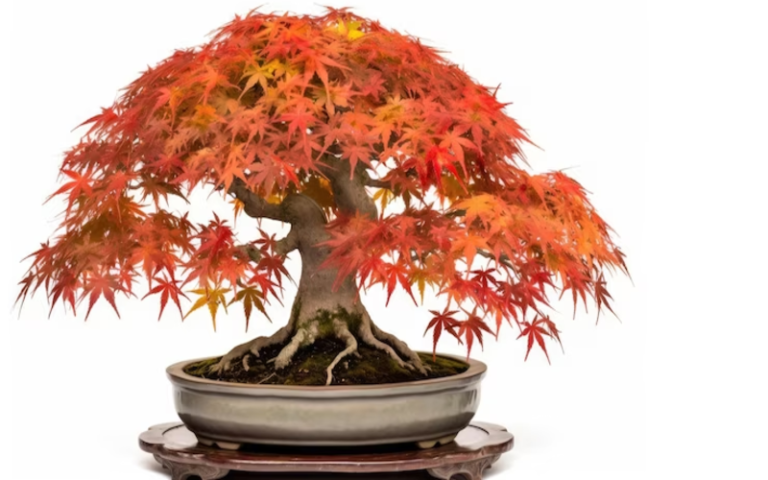Bonsai Norfolk Island Pine: A Low-Maintenance and Stylish Plant for Your Home or Office
Bonsai Norfolk Island Pine is a type of bonsai tree that has become popular among indoor gardeners. It is a small, dwarf version of the Norfolk Island Pine that is commonly found in the wild. The bonsai version of the tree is smaller and more manageable, making it ideal for indoor spaces.
What is Bonsai Norfolk Island Pine
A bonsai tree is a container-grown tiny imitation of a larger tree. It is grown and taught to take on a specific form and size by pruning and shaping. Bonsai Norfolk Island Pine is a bonsai tree variety that is a miniature imitation of the Norfolk Island Pine, a species of tree endemic to Norfolk Island in the Pacific Ocean.
Types of Bonsai Norfolk Island Pine
There are several types of bonsai Norfolk Island Pine trees, each with its own unique characteristics and growth habits. Here are three common types of bonsai Norfolk Island Pine:
Dwarf Pine: The Dwarf Pine is the smallest variety of bonsai Norfolk Island Pine, growing only a few inches tall. It has short, needle-like leaves that are green in color and grow in symmetrical patterns around the trunk.
Miniature Pine: The Miniature Pine is somewhat bigger than the Dwarf Pine and can grow to be a foot tall. It has longer, needle-like leaves that are dark green in color and grow in a spiral arrangement around the stem.
Compact Pine: The Compact Pine is the largest variety of bonsai Norfolk Island Pine, growing up to several feet tall. It has long, thin needles that are light green in color and grow in a fan-like pattern around the branches. This variety is popular among bonsai enthusiasts who prefer larger trees.
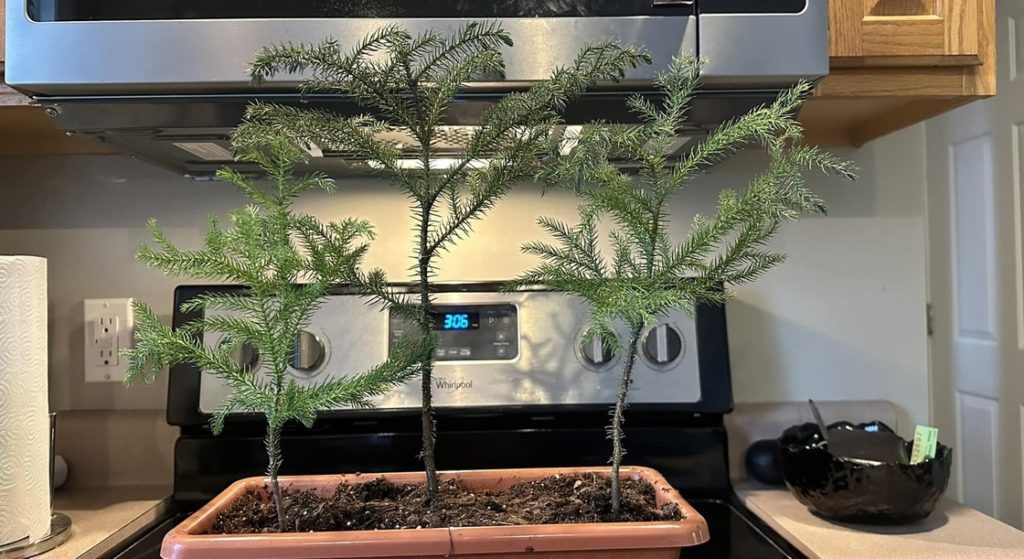
Characteristics of Bonsai Norfolk Island Pine
Norfolk Island Pine bonsai has various distinguishing traits that make it an intriguing addition to any indoor garden. These are some of its primary characteristics:
Needle-Like Leaves: Thin, needle-like leaves give the bonsai Norfolk Island Pine its distinctive appearance. The leaves are typically green and can reach a maximum length of 3 inches.
Symmetrical Growth: Bonsai Norfolk Island Pine has a symmetrical growth pattern, which means that the branches grow in a regular pattern around the trunk. This makes it easy to shape the tree into the desired bonsai form.
Slow Growth: Bonsai Norfolk Island Pine is a slow-growing tree, which means that it can take several years to achieve the desired shape and size. This requires patience and careful attention to detail.
Indoor Plant: The Norfolk Island Pine makes a great bonsai plant because it can grow in low light and dry air. It is also easy to take care of, which makes it a popular choice for people who are just starting out with bonsai.
Resilient: Norfolk Island Pine bonsai is a hardy tree that can tolerate a broad variety of temperatures and humidity levels. This makes it an excellent option for folks living in various climes.
Overall, the distinctive qualities of bonsai Norfolk Island Pine make it an excellent choice for indoor gardeners who like to bring a touch of natural beauty to their house.
How to Grow Bonsai Norfolk Island Pine:
Growing bonsai Norfolk Island Pine is relatively easy, but it requires careful attention to detail. Here’s a step-by-step guide on how to grow bonsai Norfolk Island Pine:
Choose the Right Tree: First, you’ll need to buy a bonsai Norfolk Island Pine tree from a reputable nursery. Look for a tree with a healthy root system and good branch structure.
Select the Right Container: Choose a pot that is the right size for the tree. The container should have holes in it so that water doesn’t build up.
Prepare the Soil: Bonsai Norfolk Island Pine requires well-draining soil. Mix one part peat moss with two parts perlite or sand to create a well-draining soil mix.
Plant the Tree: Carefully take the tree out of its original pot and cut any roots that are damaged. Place the tree in the new container and fill it with the prepared soil mix.
Water the Tree: Make sure the tree gets a lot of water and that the soil is damp but not soaked. When the top layer of soil feels dry to the touch, water the tree.
Provide Adequate Light: Bonsai Norfolk Island Pine prefers bright, indirect sunlight. Place the tree near a window where it can receive at least 6 hours of sunlight per day.
Prune the Tree: To shape the tree into the desired bonsai form, you will need to prune the branches regularly. Use sharp, clean pruning shears to remove any unwanted branches or leaves.
Fertilize the Tree: Bonsai Norfolk Island Pine requires regular fertilization to promote healthy growth. Use a balanced fertilizer once a month during the growing season.
Repot the Tree: Bonsai Norfolk Island Pine should be repotted every 2-3 years to ensure healthy growth. Repot the tree in the same way as when you first planted it, making sure to trim any damaged roots.
You can bring a little of nature to your house and watch your Norfolk Island Pine bonsai develop into a gorgeous specimen by following these steps. If you want your tree to thrive, remember to give it lots of love and attention.
Benefits of Bonsai Norfolk Island Pine:
Bonsai Norfolk Island Pine has several benefits that make it a popular choice among indoor gardeners. Here are some of its main benefits:
Aesthetic Appeal: Bonsai Norfolk Island Pine adds a touch of natural beauty to any indoor space. Its symmetrical growth pattern and needle-like leaves create an elegant and sophisticated look.
Air Purification: Bonsai Norfolk Island Pine is an excellent air purifier. It removes harmful pollutants from the air, improving the air quality in your home.
Stress Relief: Indoor plants, including bonsai Norfolk Island Pine, have been shown to have a calming effect on people. They help reduce stress levels and promote a sense of relaxation.
Natural Fragrance: The natural aroma of the bonsai Norfolk Island Pine might assist to purify the air in your house. The scent is subtle and not overpowering, making it a pleasant complement to any area.
Educational Value: Growing Bonsai Norfolk Island Pine can be an educational experience for children and adults alike. It teaches people about the importance of caring for living things and can inspire an appreciation for nature.
Overall, a bonsai Norfolk Island Pine is a beautiful and useful addition to any indoor space. It can help make the air better, lower stress, and make people feel calm and relaxed.
How to Care and Maintain Bonsai Norfolk Island Pine:
For your Norfolk Island Pine bonsai to be healthy and live a long time, you must maintain its health and appearance. Here are some maintenance and care instructions for your tree:
Watering: Bonsai Norfolk Island Pine requires regular watering to thrive. Water the tree when the top layer of soil feels dry to the touch, but avoid overwatering, as this can lead to root rot.
Light: Bonsai Norfolk Island Pine prefers bright, indirect sunlight. Place the tree near a window where it can receive at least 6 hours of sunlight per day.
Temperature and Humidity: Bonsai Norfolk Island Pine thrives in moderate temperatures and humidity levels. Keep the tree in a room with a temperature between 60 and 75 degrees Fahrenheit and humidity levels between 40 and 50 percent.
Fertilization: Bonsai Norfolk Island Pine requires regular fertilization to promote healthy growth. Use a balanced fertilizer once a month during the growing season.
Pruning: Regular pruning is necessary to shape the tree into the desired bonsai form. Use sharp, clean pruning shears to remove any unwanted branches or leaves.
Repotting: A Norfolk Island Pine bonsai should be moved to a new pot every two to three years to make sure it grows well. Repot the tree in the same way as when you first planted it, making sure to trim any damaged roots.
Pest Control: Keep an eye out for tree-damaging pests such as spider mites and scale insects. Employ a solution of mild soap and water to eliminate pests, and avoid strong chemicals that might damage the tree.
Bonsai Norfolk Island Pine Care Sheet
| Aspect | Care Tips |
|---|---|
| Watering | Maintain soil moisture without overwatering. After soil dries 1 inch deep, water thoroughly. Avoid overwatering. |
| Light | Bright, indirect light is excellent. Avoid direct sunlight that might scorch foliage. |
| Temperature and Humidity | 60-75°F (15-24°C) is ideal. Misting or using a humidifier to increase humidity is best. |
| Fertilization | Balanced, water-soluble fertilizer should be applied monthly during growth season. Avoid winter fertilization. |
| Pruning | Pruning keeps trees in form. Trim dead or diseased branches or shape the tree. |
| Repotting | Repot every 2-3 years with well-draining soil. Spring is best. |
| Pest Control | Monitor spider mites, scale insects, and mealybugs. Treatments include insecticidal soap and neem oil. |
By following these tips, you can keep your bonsai Norfolk Island Pine healthy and thriving. Remember to give your tree plenty of care and attention to ensure that it continues to add natural beauty to your home for many years to come.
Conclusion:
Bonsai Norfolk Island Pine is a unique and beautiful addition to any indoor space. With proper care and attention, it can thrive and provide many benefits to your home or office. Whether you are an experienced gardener or a beginner, growing bonsai Norfolk Island Pine is a rewarding and enjoyable experience that is sure to bring joy and beauty to your life.
FAQ:
Q: What is Bonsai Norfolk Island Pine?
A: Bonsai Norfolk Island Pine is a small, ornamental tree that has been cultivated to grow in a small container or pot. It is a slow-growing evergreen tree native to Norfolk Island, located in the Pacific Ocean.
Q: Can I grow Bonsai Norfolk Island Pine indoors?
A: Yes, Bonsai Norfolk Island Pine is an excellent indoor plant. It prefers bright, indirect sunlight and moderate temperature and humidity levels.
Q: How often should I water my Bonsai Norfolk Island Pine?
A: Water your Bonsai Norfolk Island Pine when the top layer of soil feels dry to the touch. Be careful not to overwater, as this can lead to root rot.
Q: How do I fertilize my Bonsai Norfolk Island Pine?
A: Use a balanced fertilizer once a month during the growing season to promote healthy growth.
Q: How do I prune my Bonsai Norfolk Island Pine?
A: Regular pruning is necessary to shape your Bonsai Norfolk Island Pine into the desired bonsai form. Use sharp, clean pruning shears to remove any unwanted branches or leaves.
Q: How often should I repot my Bonsai Norfolk Island Pine?
A: Bonsai Norfolk Island Pine should be repotted every 2-3 years to ensure healthy growth. Repot the tree in the same way as when you first planted it, making sure to trim any damaged roots.
Q: How can I tell if my Bonsai Norfolk Island Pine is healthy?
A: A healthy Bonsai Norfolk Island Pine will have vibrant green needles and a sturdy trunk. It should also be growing at a slow, steady pace and not showing any signs of disease or insect infestation.
Q: Can Bonsai Norfolk Island Pine be propagated?
A: Yes, Bonsai Norfolk Island Pine can be propagated from stem cuttings or by air layering. However, it can be a challenging process and requires a lot of patience and care.
Also Read:
Bonsai Moss: The Secret to a Healthy and Beautiful Bonsai Tree




